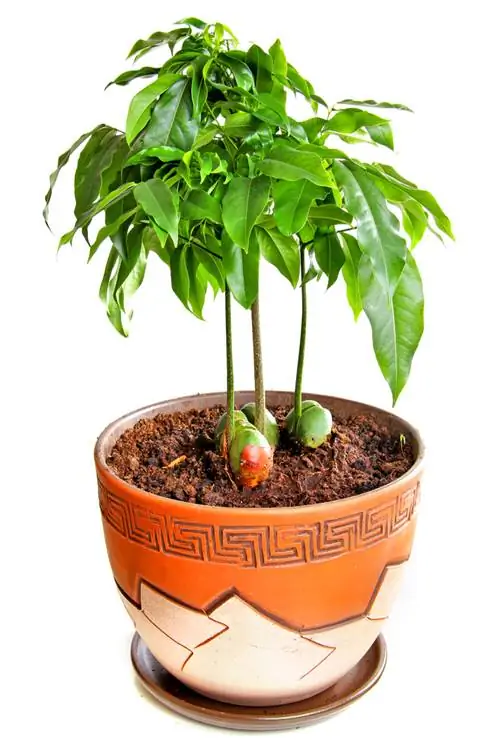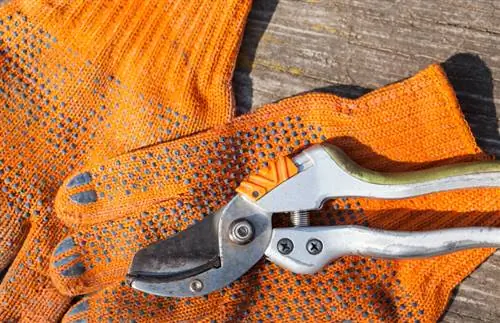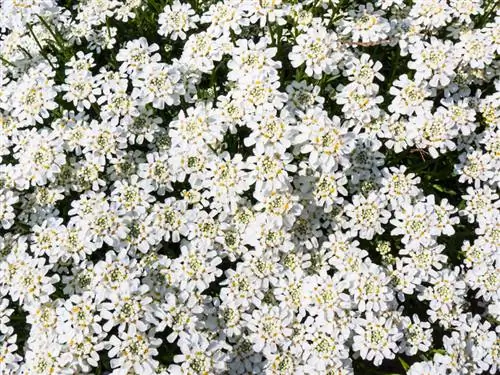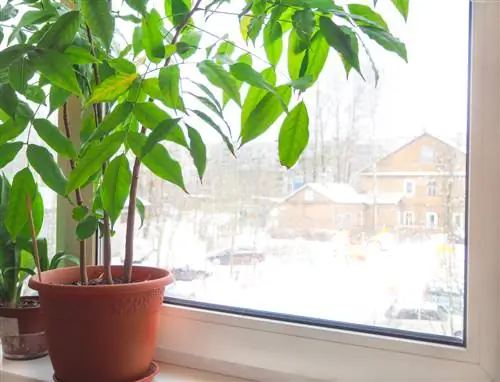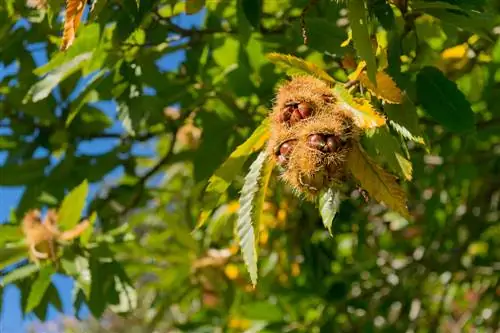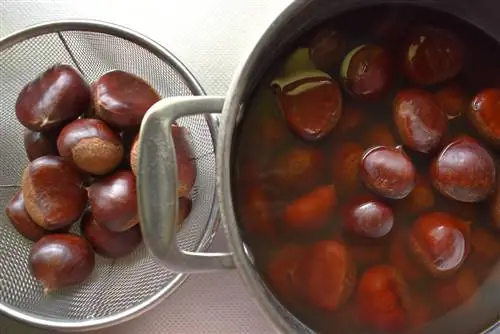- Author admin [email protected].
- Public 2023-12-16 16:46.
- Last modified 2025-01-23 11:21.
The Australian chestnut is evergreen and very attractive. In its homeland it grows into a stately tree up to 35 meters high. It can also grow up to 1.80 m high as a houseplant.
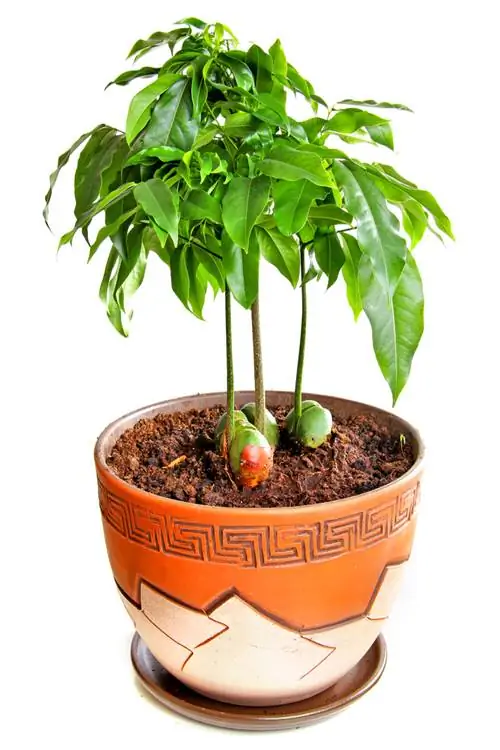
When and how should you prune the Australian chestnut?
Pruning the Australian chestnut is only necessary if it becomes too large for the living space. Wait until a nice trunk and natural growth habit has developed and use clean, sharp tools for the cut. Regular pruning is not necessary.
When does a cut make sense?
You should only prune your Australian chestnut if the plant becomes too large for your living space; regular pruning is not necessary. Wait until a nice trunk has formed and the natural growth habit is visible before making the first cut.
How should I go about cutting?
Only use clean and well-sharpened tools (€14.00 on Amazon) if you want to prune your Australian chestnut. In this way you avoid the transfer of any existing pathogens to the plant and injuries caused by bruising the shoots to be pruned.
It is best to cut so that the natural growth habit of your Australian chestnut is still clearly visible. Shorten shoots that have grown too long after cutting off diseased or dried branches. You don't have to pay attention to the flowers when cutting the Australian chestnut, because it almost never blooms indoors.
Can I limit growth in other ways?
If you don't want to prune your Australian chestnut regularly, there are other ways to limit its growth. Although a bonsai is bred to be short, it usually requires regular pruning, which requires some experience.
As an alternative to pruning, it is suggested to avoid repotting the Australian chestnut. However, you should make sure that the plant is supplied with sufficient nutrients so that it remains he althy in the long term and does not lose any leaves.
The right cut for illness
As a houseplant, the Australian chestnut rarely gets sick. It is usually spared from local pests. However, it tends to react to persistent waterlogging with root rot. This can be seen, among other things, in brown and falling leaves.
The most important things in brief:
- regular pruning not necessary
- Only cut if the plant is growing too fast
- prune sparingly
- make sure your tools are clean
- possibly avoid the cut due to limited space (small container)
Tip
The quite robust Australian chestnut does not require regular pruning.

